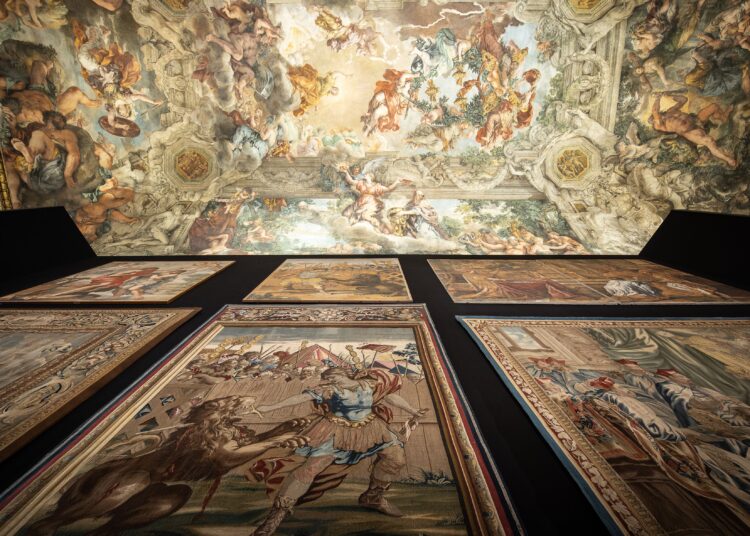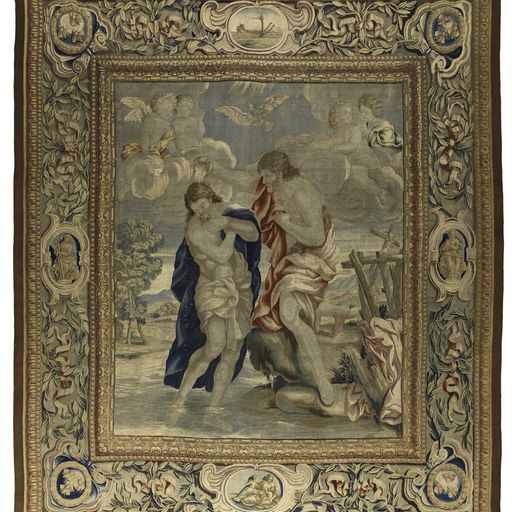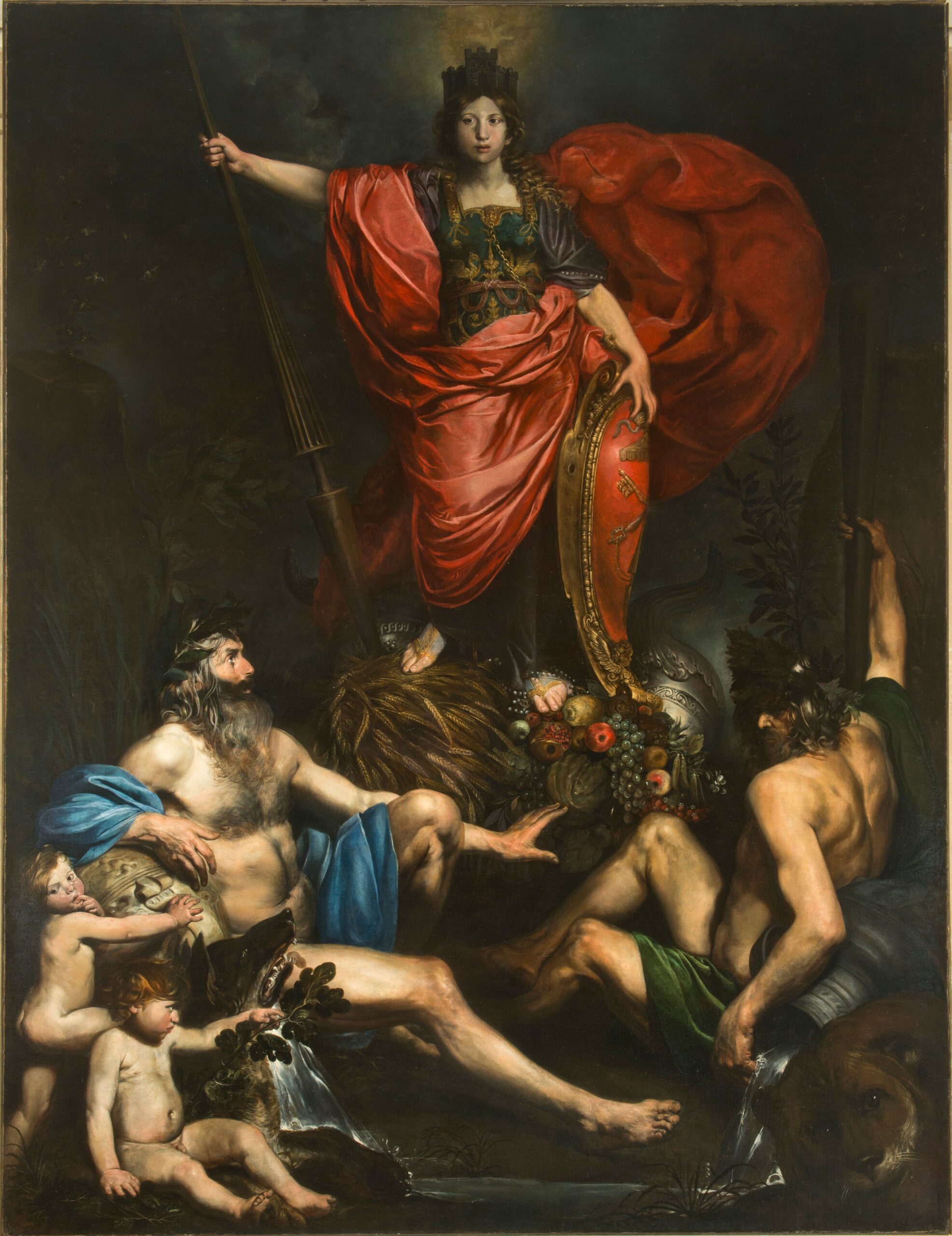Maffeo Vincenzo Barberini, born in April 1568, is better known to history as Pope Urban VIII.
To celebrate the 400th anniversary of Barberini’s papal election, until July 30th the National Galleries of Ancient Art at Rome’s Palazzo Barberini is dedicating a blockbuster exhibition entitled The Sovereign Image. Urban VIII and the Barberini to the longest and most representative pontificate of the 17th century (1623-44).
“The exhibition reconstructs,” said Flaminia Gennari Santori, Director of the Museum and co-curator of the exhibition, at the press preview, “the cultural and political profile of the Pope who, more than any other, had an impact on philosophical thought, scientific knowledge and the arts in the 17th century. It aims to illustrate the ways in which this pontiff favored cultural hegemony as a function of political and governmental action. Urban VIII, together with his nephews, Cardinals Francesco and Antonio and Prince Taddeo Barberini, tenaciously pursued an ambitious political-cultural project that pervaded all areas of knowledge and artistic and cultural production. A new style was imposed, which immediately spread not only in Rome and Italy, but throughout Europe; the Baroque was born in Rome under the Barberinis.”

For the first time more than 80 works-of-art collected by Urban VIII, 70 of which are on loan from over 40 museums and private collections worldwide will be reunited in the family’s sumptuous residence commissioned by Urban VIII and designed by the greatest architects of his time: Maderno, Borromini and Bernini, Urban VIII’s favorite artist along with Pietro da Cortona, Valentin de Boulogne, and Nicolas Poussin. Among the loaners are: the Uffizi, Brera, The Capitoline, Capodimonte, Galleria Borghese, Vatican Museums, Staatliche Museen zu Berlin, The British Museum, London’s National Gallery, the Prado, the Louvre, the Albertina, the Kunsthistorisches Museum in Vienna, the Minneapolis Institute of Art, the Metropolitan, the Philadelphia Museum of Art, the St. Louis Art Museum, and New York’s Cathedral of St. John the Divine.

in New York
Also on display are several volumes from Urban VIII’s personal library of some 4,000 titles as well as three, (one for each subject) of the twelve spectacular tapestries, which once decorated St. Peter’s Basilica. These illustrate episodes of Christ’s, the Emperor Constantine’s, and Urban VIII’s lives produced by the Barberini Tapestry Workshop, promoted by the pontiff’s nephew Francesco in 1625. Here they’re juxtaposed for the first time with their preparatory cartoons.
The exhibition is displayed in chronological order in twelve sections, proceeding from the Exhibition Space on the ground floor to the emblematic spaces of the museum once the family residence, such as the monumental rooms on the piano nobile: The Pietro da Cortona Room with its immense ceiling fresco Allegory of Divine Providence and Barberini Power, the Throne Room, and the Landscape Room. Section One, “Pleasure and Strategy” focuses on the figure of Maffeo Barberini; Two, “Imagining the Dynasty”, presents his nephews, the other protagonists of his papacy; Three, “The Factory of Saints”, illustrates Urban’s effort to reaffirm the universalism of the Catholic Church; Four, “Hic Domus”, describes his art collection; Five, “Family Enterprises”, explains his symbolic and allegorical universe dominated by the sun, bees (the family logo), and laurel; Six, “Ancient Culture”, his activities to recover ancient art; Seven, “Modern Science”, his promotion of science; Eight, “Weaving the Weft”, The Barberini Tapestry Workshop;

Nine, “Rhetoric and Poetry”, his love of literature; Ten, “Le Api Munifiche”, the art commissioned by his nephews and then sent as diplomatic gifts to the courts of Paris, Madrid, London, and Vienna; Eleven, “Around the Beehive”, his collecting strategy; and Twelve”, “The Theater of Amazements”, recounts the scenographic dimension of Palazzo Barberini, which originally was predominantly used for political ceremonies and theatrical performances.
Outside the Palazzo Barberini, other Urban VIII, the only Barberini pope and the last named Urban, commissions include his tomb and the baldacchino in St. Peter’s Basilica, the “Bee Fountain” and the “Triton Fountain” in Piazza Barberini, all designed by Bernini, and the glass window with the bee coat-of-arms in the counter-façade of Santa Maria d’Aracoeli.












